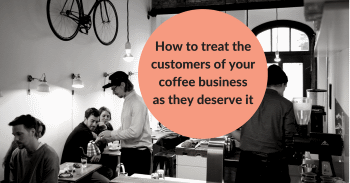Origin of Some Coffee Defects

In the 90s, about 20% of Brazil’s coffee production presented the so-called ‘Rio defect’, characterized by a strong off-flavour, often described as medicinal, phenolic, or iodine-like. Occasionally, this defect also occurs in coffees from other origins. An extensive investigation was carried out in the 90s to identify the compound(s) responsible for this coffee off-flavour.
2,4,6-Trichloroanisole (TCA) was identified as the most likely key compound for the Rio off-flavor. TCA was found in all Rio samples, in concentrations ranging from 1 to 100 ppb (ng/kg). Less than 50% of the TCA present in green beans was lost during roasting. 2,4,6-Trichlorophenol (TCP), the probable precursor of TCA, was also found in most of these samples. (Liardon et al., 1990).

2,4,6-TCA is the same molecule responsible for the cork taint in wines. The biochemical mechanism is still hypothetical, but the most probable way of formation is the O-methylation from 2,4,6-TCP by filamentous fungi under a specific temperature and high relative humidity. Another possibility could be a biochemical reaction through the shikimic acid as a precursor, but it was not fully understood and confirmed for coffee.
Shikimic Acid

In a paper published in 1999, Cantergiani et al. showed that 2,4,6-TCA was also present in Mexican green coffee, described as mouldy/earthy. Molecules such as Geosmin, Methyl-Isoborneol or secButyl Methoxypyrazine were present in these tainted green coffees. When one of the other molecules dominates, the defect can turn from “Rio” to Mouldy or Earthy.
All of the defects were born from bad agricultural practices, especially in warehouses. The monitoring of the temperature and the low relative humidity are the minimum conditions to avoid the proliferation of the microorganisms able to cause the “Rio” off-flavour. The absence of fungicides, especially those containing TCP is also a prerequisite to avoid TCA formation.
2,4,6-TCP (Trichlorophenol) is a molecule occurring in some fungicides used to preserve wood. In the case of green coffee, the TCP could be present in a wooden pallet and therefore was transferred into the green coffee beans through the permeable jute bags and absorbed by the lipid fraction of the green coffee beans.
Nevertheless, “Rio” coffees are considered defect products in Europe and the US, but the specific aroma is appreciated in countries such as Greece, Turkey, Lebanon and some Eastern European countries. It is now possible that some exporters in Brazil cause this defect purposefully, in order to satisfy clients in those countries!



